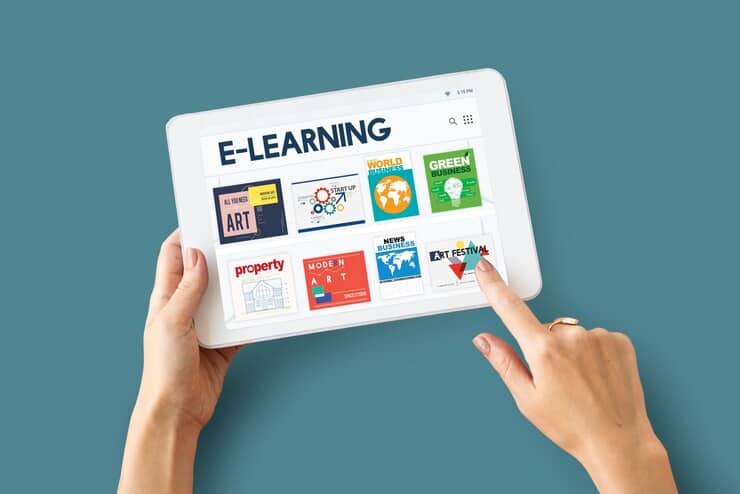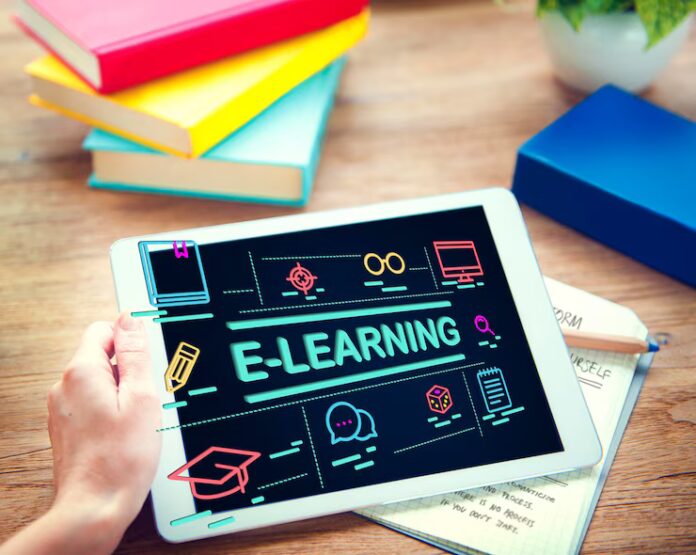The future of education is evolving rapidly, fueled by advancements in technology and a growing demand for accessible, personalized learning. At the heart of this transformation lies e-learning and online courses, which are revolutionizing traditional educational paradigms. These tools have transcended geographical and financial barriers, offering learners across the globe an opportunity to enhance their knowledge and skills at their own pace.
This article explores the key facets of e-learning, the benefits it offers, challenges it faces, emerging trends, and its long-term impact on education. By understanding the role of online education in shaping the future, we can better appreciate its significance in a world that demands continuous learning and adaptability.
Understanding E-Learning and Online Courses
E-learning refers to the use of electronic technologies to access educational content outside of a traditional classroom. It encompasses various formats, including video lectures, interactive modules, virtual classrooms, and even gamified content. Online courses, a subset of e-learning, are structured programs offered over the internet, often by universities, companies, or independent educators.
The proliferation of e-learning platforms like Coursera, Udemy, Khan Academy, and edX has democratized education, making high-quality content available to millions. Whether it’s a child learning basic math skills or a professional acquiring new certifications, e-learning serves diverse audiences.
The Benefits of E-Learning
1. Accessibility
E-learning bridges geographical barriers, providing learners from remote areas access to world-class educators and institutions. A student in a small town can now learn coding from top Silicon Valley experts or explore art history from a museum curator in Europe.
2. Flexibility and Convenience
One of the biggest advantages of online education is its flexibility. Learners can access content at their convenience, balancing studies with work, family, or other commitments. This self-paced approach is particularly beneficial for adult learners and professionals.
3. Cost-Effectiveness
Traditional education often incurs high costs for tuition, transportation, and accommodation. E-learning significantly reduces these expenses, making quality education more affordable.
4. Personalized Learning
Advanced e-learning platforms use artificial intelligence to offer personalized recommendations, ensuring learners engage with content that matches their pace and interests. Adaptive learning systems analyze performance and adjust difficulty levels accordingly.
5. Wide Range of Courses
E-learning platforms offer a vast array of courses, from niche subjects like astrophysics to practical skills like digital marketing. This variety empowers learners to explore new fields and acquire skills relevant to their career goals.
6. Global Collaboration
Virtual classrooms enable students from different parts of the world to collaborate on projects, fostering cross-cultural understanding and global perspectives.
7. Environmentally Friendly
E-learning reduces the carbon footprint associated with traditional education, such as transportation and paper usage, making it a greener alternative.
Challenges in E-Learning
Despite its many benefits, e-learning faces several challenges:
1. Digital Divide
Not everyone has access to reliable internet or devices necessary for e-learning. This disparity creates a digital divide, particularly in developing regions.
2. Lack of Human Interaction
E-learning can sometimes feel isolating, as it lacks the face-to-face interaction and camaraderie found in traditional classrooms. This absence of personal connection can affect motivation and engagement.
3. Quality Assurance
With the proliferation of online courses, ensuring the quality and credibility of content remains a concern. Learners must carefully evaluate course providers and instructors.
4. Self-Discipline
Self-paced learning requires a high degree of discipline and time management. Without a structured environment, some learners may struggle to stay motivated.
5. Technical Issues
Platform glitches, inadequate software, or connectivity problems can disrupt the learning experience.
6. Assessment and Certification
Standardized assessment in e-learning can be challenging, and the credibility of online certifications varies across industries and employers.
Emerging Trends in E-Learning

The evolution of e-learning is marked by innovative trends that promise to enhance the learning experience further:
1. Artificial Intelligence (AI) and Machine Learning
AI-driven systems provide personalized learning paths, adaptive assessments, and intelligent tutoring. Chatbots and virtual assistants offer real-time support, making learning more interactive.
2. Gamification
Incorporating game elements like rewards, badges, and leaderboards into courses increases engagement and motivation, particularly among younger learners.
3. Virtual Reality (VR) and Augmented Reality (AR)
Immersive technologies like VR and AR enable learners to explore virtual environments, conduct experiments, or practice skills in a simulated setting, making learning more experiential.
4. Microlearning
Microlearning delivers bite-sized lessons focusing on specific topics, catering to busy learners who prefer quick, concise content.
5. Blockchain for Credentialing
Blockchain technology ensures secure, tamper-proof storage of educational credentials, increasing trust in online certifications.
6. Collaboration Tools
Interactive platforms with collaborative features like virtual whiteboards, breakout rooms, and live chats foster group discussions and teamwork.
7. Lifelong Learning
As industries evolve, continuous skill development becomes essential. E-learning supports lifelong learning by offering courses tailored to professionals seeking to upskill or reskill.
8. Social Learning
Integration of social media into e-learning platforms allows learners to connect, share insights, and engage in discussions, enriching the overall experience.
The Impact of E-Learning on Traditional Education
E-learning has influenced traditional education in several ways:
1. Blended Learning Models
Institutions increasingly adopt hybrid models combining classroom teaching with online components, offering a balanced approach.
2. Flipped Classrooms
In a flipped classroom model, students learn theoretical concepts online and use classroom time for discussions, problem-solving, and hands-on activities.
3. Globalization of Education
Universities and schools now cater to a global audience, offering online degrees and programs accessible to international students.
4. Cost Efficiency
E-learning reduces operational costs for institutions, enabling them to allocate resources to other critical areas like research and development.
Case Studies: E-Learning Success Stories
1. Coursera
Founded in 2012, Coursera collaborates with top universities and companies to offer affordable, high-quality online courses. It has reached over 100 million learners globally, offering certifications, specializations, and degree programs.
2. Khan Academy
Khan Academy provides free educational content for students worldwide, covering subjects from elementary math to college-level science. Its interactive exercises and instructional videos make learning engaging and accessible.
3. edX
edX, a platform founded by Harvard and MIT, offers online courses from leading institutions. It supports open learning, offering both free and paid options.
4. Duolingo
Duolingo revolutionized language learning with its gamified approach. It has made learning new languages fun and accessible to millions.
Future Prospects of E-Learning
The future of e-learning is bright, with ongoing advancements in technology and pedagogy. Here’s what we can expect:
1. Global Reach
As internet access improves, e-learning will penetrate remote areas, democratizing education further.
2. AI-Powered Learning
Artificial intelligence will enhance personalization, enabling adaptive content delivery tailored to individual needs.
3. Holistic Learning
Future e-learning platforms will focus on overall development, integrating mental health resources, mentorship, and career counseling.
4. Industry Collaboration
Stronger ties between e-learning platforms and industries will ensure that course content aligns with job market demands.
5. Accessibility Enhancements
Innovations in assistive technology will make e-learning more inclusive for learners with disabilities.
Conclusion
E-learning and online courses have redefined education, making it more inclusive, flexible, and relevant to the needs of the modern world. While challenges like the digital divide and quality assurance persist, ongoing innovations promise to overcome these hurdles, shaping a future where learning is accessible to all.
As we continue to embrace this digital transformation, the focus must remain on creating engaging, high-quality content that equips learners with the skills and knowledge they need to thrive in a rapidly changing world. The future of education is here, and it’s online.
FAQs
What is e-learning?
E-learning refers to the use of digital platforms to deliver educational content outside traditional classrooms.
Are online courses as effective as traditional classes?
Yes, when designed well, online courses can be as effective as traditional classes, offering flexibility and personalized learning.
What are the best platforms for e-learning?
Popular platforms include Coursera, Udemy, edX, Khan Academy, and LinkedIn Learning.
How can I ensure the credibility of an online course?
Check the course provider’s reputation, instructor credentials, and reviews before enrolling.
What are the advantages of e-learning over traditional education?
E-learning offers accessibility, flexibility, cost-effectiveness, and a wide range of course options.
Is e-learning suitable for children?
Yes, e-learning can be adapted for children with interactive, age-appropriate content.
What is a flipped classroom?
A flipped classroom involves learning theoretical concepts online and engaging in discussions and activities during in-person sessions.
How is AI used in e-learning?
AI enables personalized learning paths, adaptive assessments, and intelligent tutoring systems in e-learning.
What is the role of gamification in e-learning?
Gamification increases engagement by incorporating game elements like rewards and challenges into courses.
What is the future of e-learning?
The future includes global accessibility, AI-powered personalization, and integration with real-world skills to meet evolving learner needs.


